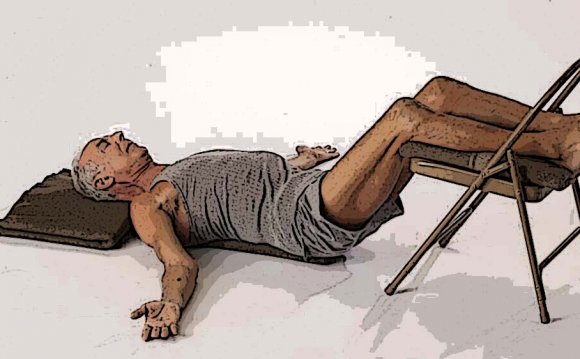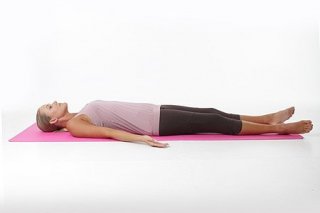
 All About Savasana
All About Savasana
Savasana, also spelled Shavasana or Shivasana, literally means corpse pose. Lying on the back, arms and legs are spread at 45 degrees, the eyes are shut and the breathe is long and deep. The entire body is relaxed into the ground, releasing tension in any area of the body. It is called corpse pose not only because of the position of the body, but also in its ability to prepare you for the ultimate relaxation: death. Far from the macabre coloring death has taken on the western society, in yogic tradition death is the most important moment of life. All yoga and meditation can be seen as a preparation for death, as the belief in reincarnation also lends itself to the belief that you are confronted at death with a choice…one that will ultimately determine if you are led off the wheel of samskara. Certainly to participate in yoga does not require a belief in this philosophy. You can do yoga for spiritual purposes or yoga simply for physiological purposes, and there are many physical benefits of savasana.
Savasana decreases heart rate, blood pressure, muscle tension and general levels of anxiety. It increases energy levels, boosts memory and stimulates the ability to concentrate. It gives you a more easy sleep and brings a general sense of well-being. And everyone can do it, making it the great common denominator of yoga practice.
Savasana is often called the most important pose in yoga. All of yoga practice, in every form from Iyengar to Kundalini, intelligently informs the body of neuromuscular changes. That is to say, the practice of yoga fundamentally changes the structure of who we are. Savasana, allows the body to rest in order to integrate and accept these changes prior to entering the fray of normal life. This is especially important for the nervous system. In Kundalini yoga in particular, enormous stress is placed on the nervous system in a controlled way in order to strengthen it. Just like lifting weights at a gym to grow your biceps, placing controlled stress on the nervous system allows your body to develop a strength and endurance that allows you to cope with normal life. However, if you do not rest and give the nervous system time to integrate these changes, but instead jump straight into normal life activity, at worst you run the risk of a “over-training”, where essentially your nervous system and your neuromuscular system become too tightly wound and at best you simply don’t derive maximum benefit from your practice. In particular, Yogi Bhajan included savasana with, saying that it was important to rest for an equal amount of time to your active practice in order to integrate the benefits.
So if savasana is so important, why do most western yoga classes speed race through it? Traditionally savasana lasts for up to half an hour. In many classes, that is cut to 1 or 2 minutes and dropped altogether from personal practices. Why? The answer may lie in contemporary culture, which values speed, efficiency and things that look hard. There is an assumption that Bound Lotus or an arm balance or wheel pose must be more beneficial than Savasana because its harder. It’s not the case. Benefit and exertion to not have a direct correlation. In fact, savasana is considered to be the most difficult of all yoga poses to master, because complete relaxation of body and mind is incredibly difficult to achieve.
 Savasana also serves the point of ritual. It gives teachers the opportunity to guide students in relaxation, self-blessing, prayer, affirmation, gong or simple, extraordinary peace. It allows the individual practitioner to give ceremony and sacredness to their yoga practice and to feel “the sweet spot” that so often results from our efforts in yoga.
Savasana also serves the point of ritual. It gives teachers the opportunity to guide students in relaxation, self-blessing, prayer, affirmation, gong or simple, extraordinary peace. It allows the individual practitioner to give ceremony and sacredness to their yoga practice and to feel “the sweet spot” that so often results from our efforts in yoga.
How to Lead Savasana:
Speak softly. Allow your voice to have a gentle quality.
Guide kindly. Remind your students to relax each part of their body. It can be helpful to have guidance, especially for new students.
Shhhh. Allow a period of silence either during or after your talk. Going deep within is part of the point of savasana.
Choose music wisely. Selecting the appropriate mantra or vibration from music can support and enhance your student’s experience. You can also play my “Guided Meditation for Deep Relaxation” from the CD Journey into Stillness if you are more comfortable having the experience guided by someone else. This track is a perfect guided savasana and at 9 minutes long, it fits into a packed class schedule.
Give yourself enough time. Do not rush savasana. Plan your class carefully to include all the time you will need. If you have 5 minutes, then give yourself the full 5 minutes. Be fully present to your experience, no matter how much or how little time you have.









